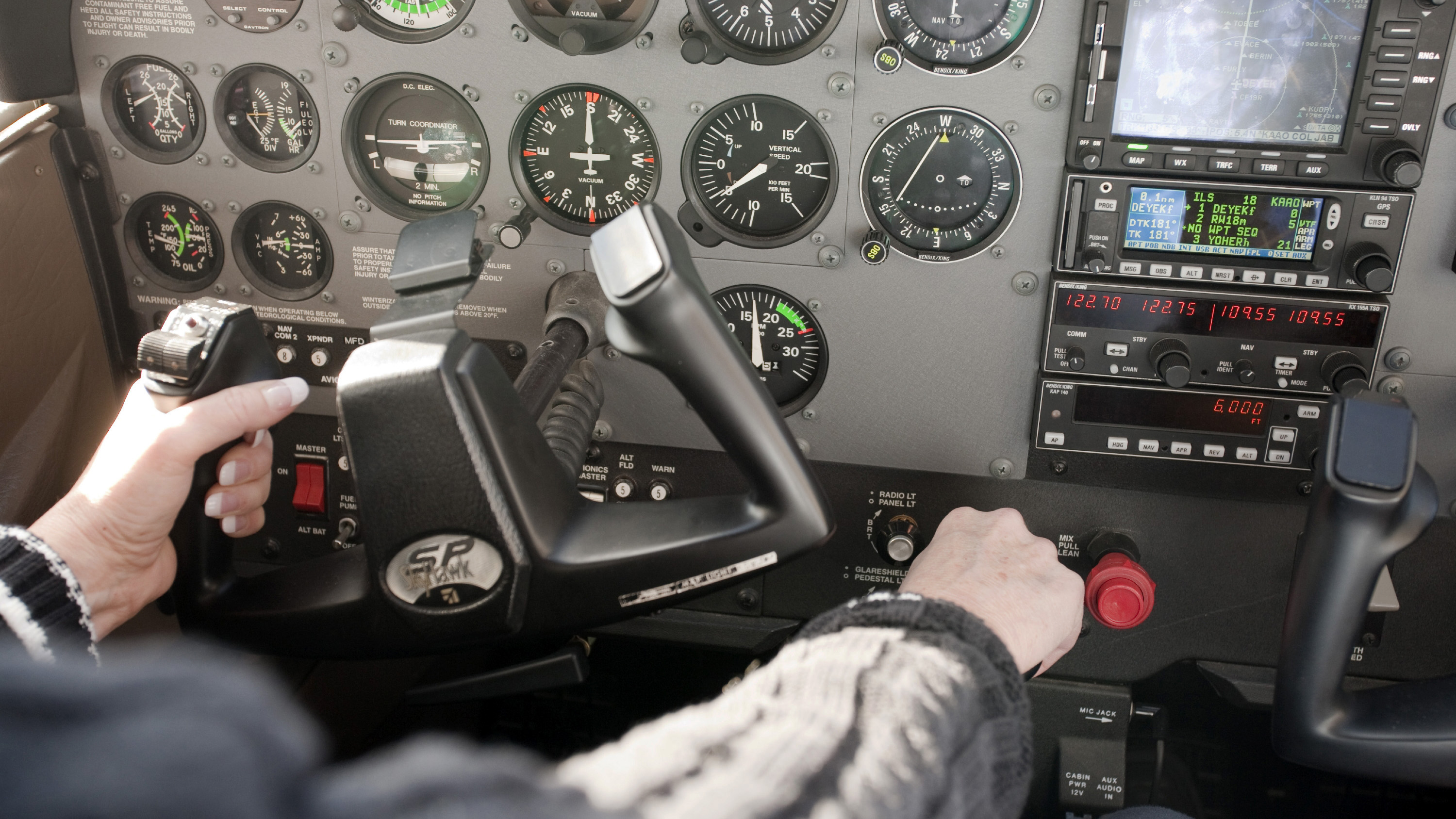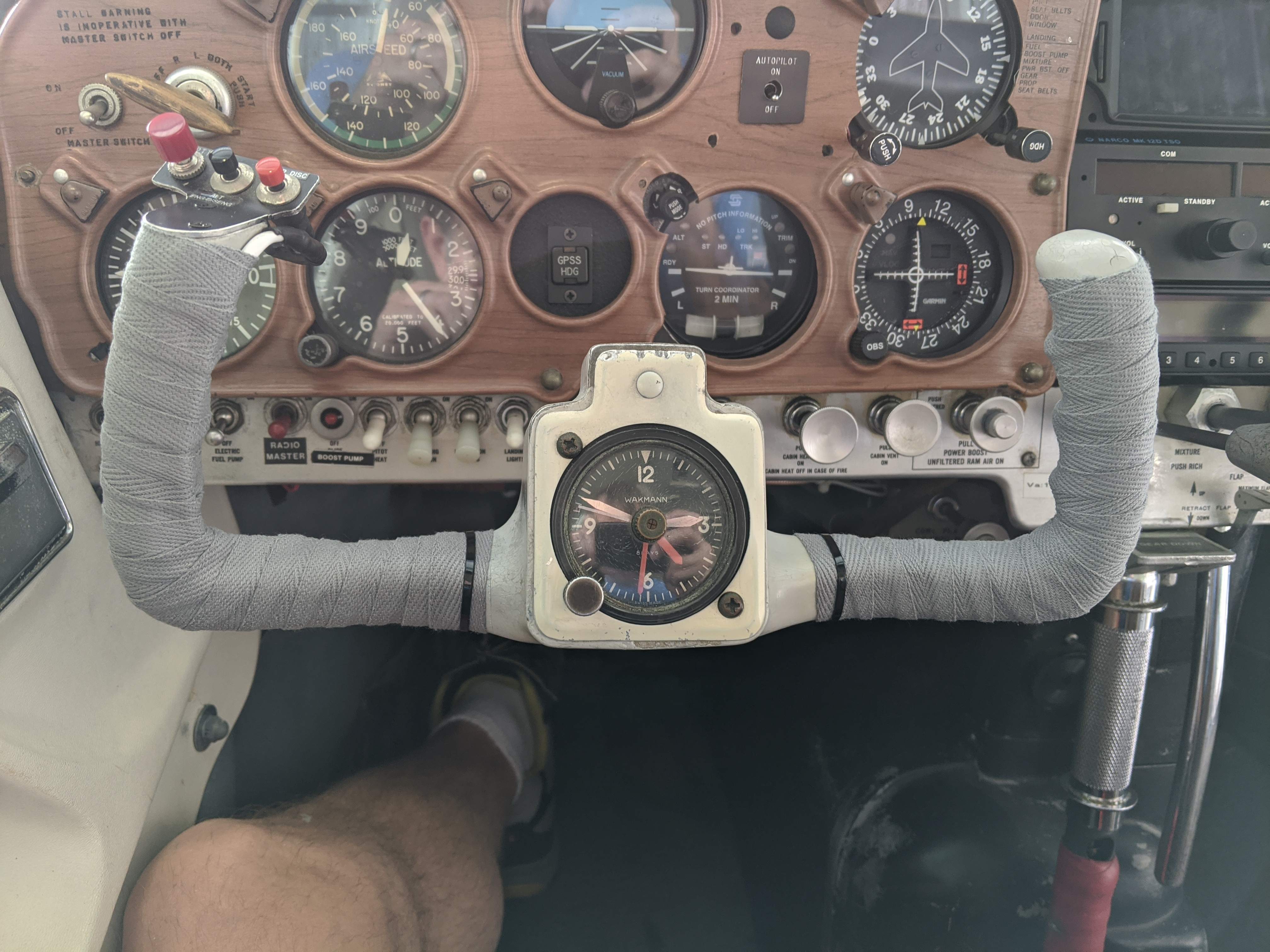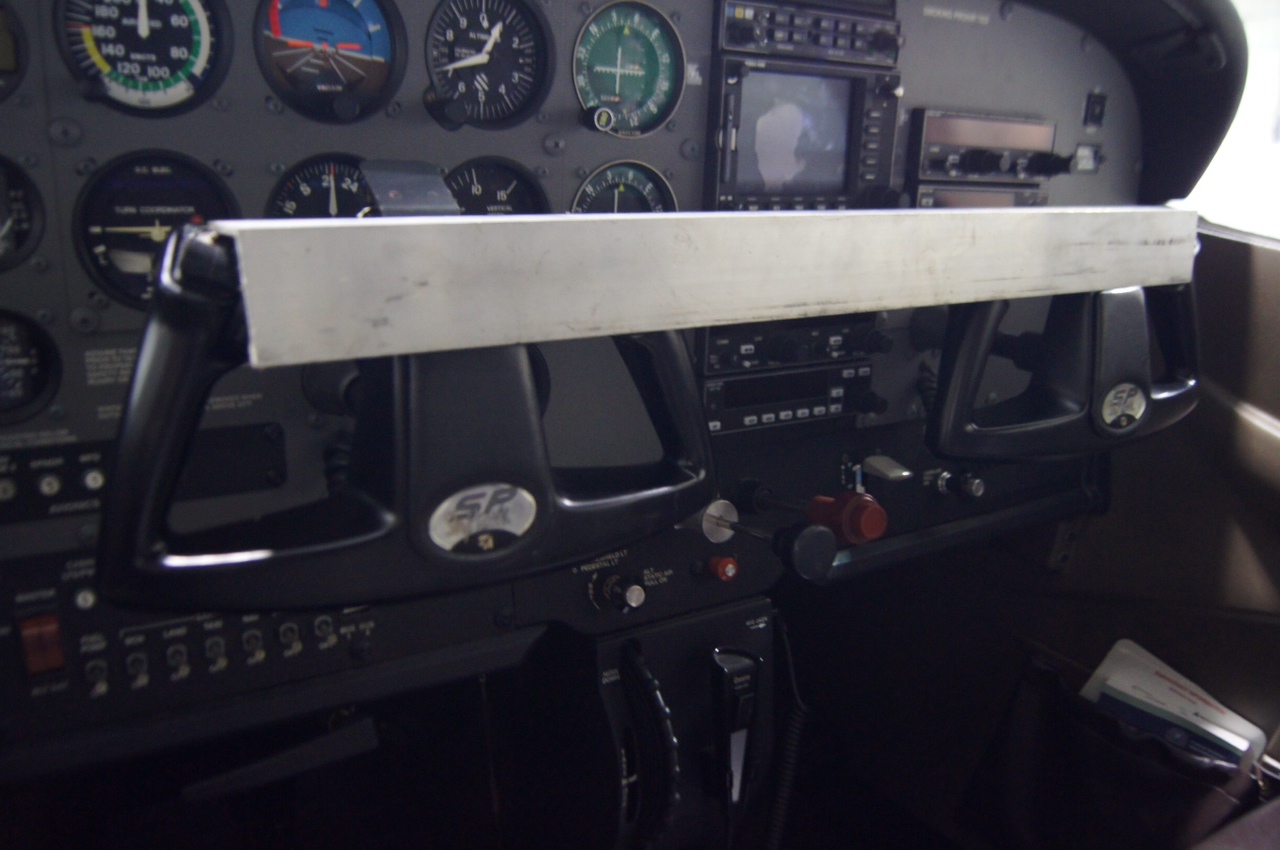Aircraft Yoke - Members DO more LEARN more SAVE more - Get more from being a pilot - CLICK HERE
The student pilot was having a rough day at the controls and it didn't help that his flight instructor seemed to be sending mixed signals about how to fix it.
Aircraft Yoke

The right amount of yoke pressure depends on the situation, but regardless of the circumstances, the movements should be smooth. Photo by Mike Fizer.
What Kind Of Weird Yoke Is This?
"Lose death control. Use light touch," the CFI had urged as the student pilot struggled to keep a sharp turn from spiraling into a climb.
"Pull, pull!" the CFI had prompted a few minutes later when the student pilot landed - a little too fast and flat - at the end of the course.
The answer, of course, is that it depends. There is even a case where the best thing to do is to do nothing.
In most cases, the answer lies between the "death grip" that indicates a pilot under pressure and the calm of someone who did a good job trimming the plane for straight flight. level and now sits, arms folded, admiring. Manual work. (Despite the air of total relaxation, the pilot's legs are active, applying gentle pressure to the rudder pedals to keep the aircraft from veering off course.)
Logitech G Flight Yoke System And Flight Rudder Pedals Kit With
Pilots who have not yet acquired this skill wonder how one can fly hands-free for more than a short period of time. Isn't an occasional period of turbulence likely to create discomfort that requires intervention?
They soon learn that many disorders are resolved. The aircraft's stability features take care of this, which you can observe the next time you fly: induce a small movement around the pitch axis (lateral axis) and watch the aircraft go into a series of descending oscillations and eventually return in the cut state.
Of course, maneuvers such as turning around a point or slow flight obviously require moderately aggressive manipulation of the controls and constant corrections. But entries can be smooth. If you don't already have your instructor's voice in your head asking you, "Minor corrections!" then you are likely to feel it.

A Gentle Touch is not simply a formula for educational maneuvers pleasing to the determined examiner. It can be a lifesaver when applied to an instrument-referenced emergency flight, helping you maintain control and avoid spatial disorientation.
Yoke Vs. Sidestick: Jury Still Out On What Works Best For Pilots
As for that prompt to "pull, pull" to get the plane into the right attitude for landing, go ahead and pull, but smoothly, combining touch and timing to end your flight on the perfect note
Dan Namowitz has been writing in various capacities since 1991. He has been a flight instructor since 1990 and has been a member for 35 years.
Aircraft Spruce offers almost everything a pilot or aircraft owner could need. As a strategic partner since 2012, the company sponsors programs that bring hands-on knowledge and DIY spirit to members. The cabin of even the smallest and simplest plane can be an overwhelming place. Fortunately, the most "hands-on" elements of the cockpit, those that allow the pilot to direct the actual movement of the aircraft from taxi to landing, are usually similar from one cockpit design to another.
Even if a new student single-engine pilot had never seen the stunning cockpit of a Boeing 777, he could probably pick out its most basic controls. But for the purposes of the next few hundred words, this article will focus on standard cockpit controls on smaller aircraft.
The Basics Of The Cockpit All Pilots Should Know
Knowing the controls of an aircraft goes hand in hand with a good understanding of flight forces and how an aircraft operates. Familiarity with the main control surfaces of an airplane will make controlling a cockpit easier. For example, a pilot will have a better understanding of how to effectively operate the rudders of an airplane if he is confident that he knows how a vertical stabilizer works.
When you start a car, you need a key or fob to start the engine. The same principle applies to small aircraft. The "key" in this case is the ignition control system. While a series of switches are used to regulate a small APU in the starting process of large commercial aircraft, pilots of some smaller aircraft may require a key similar to a real car. Older airplanes may require a lever to be actuated during the ignition process, but most pilots work with automatic starters.
Most ignition switches have five positions: off, right (R), left (L), both, and start. "Right," "left," and "both" refer to the magnetos, or electric generators, inside the airplane's engines. Paying close attention to pre-flight procedures can avoid common ignition control problems.

When pilots are depicted in movies, they are rarely seen doing weight and balance calculations or filing flight plans correctly. They are usually in action in flight, yoke in hand.
How To Setup Ch Products Flight Sim Yoke With Microsoft Flight
The yoke is the "rudder" of the airplane. The yoke controls the airplane's wings. In simpler terms, it allows the pilot to move the aircraft 'up', 'down', 'left' and 'right'. Turning the yoke from side to side controls yaw and pitch. Forward thrust on the yoke directs the nose of the aircraft toward the ground. pulling it back instructs the nose to pull up.
The yokes appear on fixed-wing aircraft and are also known as the "control wheel". Conventional yokes are W or U shaped, with some available as M or "RAM horn". The scales on smaller aircraft are attached directly to the instrument panel with heavy-duty tubing.
Cirrus SR aircraft and some light sport aircraft are equipped with side poles instead of yokes. This placement allows for a larger instrument display and is lighter than a traditional yoke. Some pilots prefer them to more traditional forms of control.
While some modern aerobatics and fighter jets use center masts to deal more effectively with G-forces, most pilots who open the door of an older aircraft will see a mast instead of a yoke. The control lever is usually located on the floor of the cab. the pilot climbs into his seat. Sometimes called a "joystick", it controls the aircraft's attitude and altitude in the same way as a yoke.
What The Lion Air Pilots May Have Needed To Do To Avoid A Crash
Some aircraft provide pilots with a single unit for engine operation, with all relevant controls grouped into what is called an engine control quadrant. Other cockpits separate these controls, but they are usually grouped together, usually in the lower center of the instrument panel.
The throttle is the power control of the airplane engine. It is similar to an accelerator pedal in a car. Usually black in color, the throttle is a push device or lever. By adjusting the amount of fuel/air mixture using the throttle, the pilot adds or subtracts power from the aircraft's engine or engines.
In controlled (or variable pitch) aircraft, pilots will find the propeller control next to the throttle. This works on propeller turns, allowing the pilot to request more power on takeoff and then adjust fuel efficiency during flight. It is usually blue.
/cdn.vox-cdn.com/uploads/chorus_image/image/69915078/MicrosoftTeams_image__2__copy.0.jpg)
Next to the propeller control is a mixture, which is red. This deals with the ratio of fuel to air entering the engine. When the plane takes off, the pilot sets the mixture to "rich" to allow the maximum amount of fuel. During cruise and landing, the mixture knob adjusts leaner, or allows more air efficiently.
The Best Joysticks And Yokes For 'microsoft Flight Simulator'
If a small aircraft was built from the late 1970s onwards, pilots will usually find a flap control switch on the instrument panel. It is traditionally white and horizontal in the cockpit and sometimes even shaped like a small wing. Typically located next to the throttle, the flap handle allows the weft to increase lift and drag. Flap grip is used primarily during take-off, approach and landing.
On airplanes built before the 1970s, if a pilot wants to control an airplane's flaps, he uses a handle located near the seat. Pulling it up lowers the flaps.
As if the instrument panel wasn't enough to worry about, the pilot also has to familiarize himself with the rudder pedals on the floor of an aircraft. But be glad those pedals exist: early airplanes had no brakes, and pilots simply slowed down and thought a bumpy grass runway would roll the plane to a stop.
The rudder controls the yaw or direction of the aircraft to "left" and "right". The pedals control the trailing edge of the aircraft's vertical stabilizer. In most small airplanes, the rudder pedals also control the wheel brakes when the pilot depresses the top of the pedals.
General Aviation Panel + Yoke
Mr. Matthew A. Johnston has more than 23 years of experience in various roles in education and is currently the president of California Aeronautical University. He maintains membership and is a supportive participant in many aviation advocacy and advocacy associations, including the University Aviation Association (UAA), Regional Airline Association (RAA), AOPA, NBAA, and EAA with its Young Eagles program. It prides itself on working with airlines, airlines and individual carriers
Aircraft yoke mount for ipad, ipad mini aircraft yoke mount, yoke bar, aircraft yoke for sale, aircraft yoke reconditioning, yoke bearing, alpha yoke, yoke mount, yoko yoke, aircraft yoke covers, aircraft control yoke, yoke roller